Valle de la Luna Bolivia – How to visit & is it worth it?
Are you planning to visit Valle de la Luna Bolivia? Let me help.
I visited Valle de la Luna on a trip to Bolivia and loved how easy it was to get there from the capital – it’s basically just 10 km south of La Paz.
Valle de la Luna (also known as Moon Valley) is a bizarre landscape of eroded rock and clay, and the jagged hills look like they belong in a space movie. And if you’re wondering – yes, it’s definitely worth the trip!
Here is a complete guide on how to visit the Valle de la Luna, including how to get there, opening hours, and much more.
Let’s dive in.
This post contains referral links for products I love. Adventurous Miriam earns a small commission at no extra cost to you if you purchase through my links. I appreciate your support ♡ Learn more
What is Bolivia’s Moon Valley?
There are actually two other Valle de la Lunas in South America (Chile and Argentina), but they all look different.
Valle de la Luna in Bolivia used to be a mountain, but over the centuries it was eroded by wind and weather and transformed into a valley with sharp, odd formations piled high on top of one another.
People claim to see animal and human shapes carved into the rocks of the lunar landscape. You can look, but I didn’t see any.
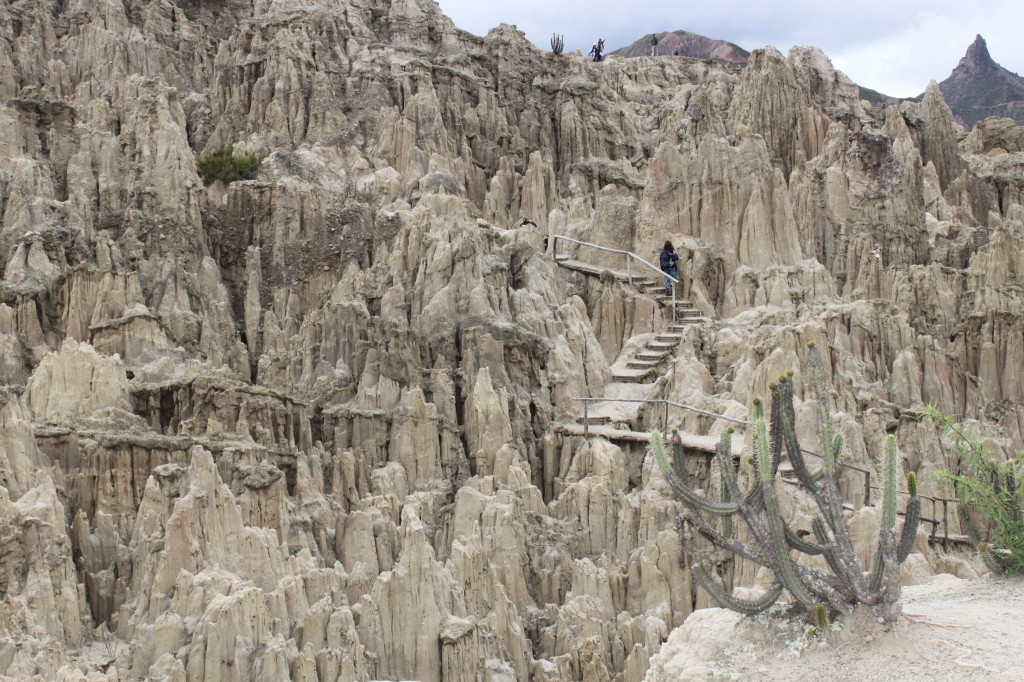
Is Valle de la Luna worth visiting?
Yes, I think so!
Valle de la Luna is different from your usual tourist spots, and that alone makes it worth visiting.
It’s close to La Paz, easy to fit into your travel plans, and it’s a pretty fun way to spend a morning or afternoon.
History of Valley of the Moon Bolivia
Valle de la Luna has a landscape that’s been shaped by erosion over millions of years.
How, exactly?
Erosion stripped away the upper part of a clay mountain, and the elements like wind and rain have carved out a field of tall, white columns.
This process has created the distinctive terrain we see now.
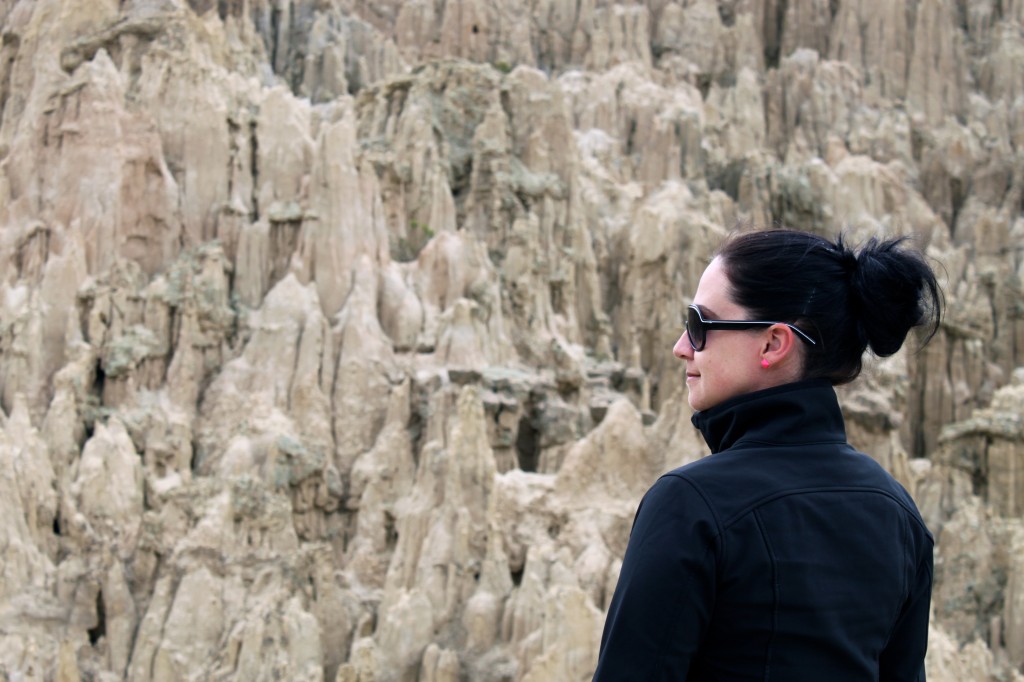
Where is the Moon Valley?
Valle de la Luna is located about 10 kilometers southwest of La Paz’s city center in Bolivia, in the Pedro Domingo Murillo Province.
Can you visit Valle de la Luna (Bolivia)
Yes, you can and I would make sure to do this as it’s one of the best things to do in Bolivia.
It’s an incredible place to go to watch the sunset and it doesn’t hurt that it’s so close to La Paz.
Tickets aren’t overly expensive ($2) and it’s easy to explore on your own.
How to visit Valle de la Luna La Paz
To visit Valle de la Luna in La Paz, you can grab a taxi and ask the driver to take you straight there. You can also hop on any bus headed toward Mallasa and ask the driver to let you out at the right spot.
It’s about a 10 to 15-minute ride from the south zone of La Paz.
My recommendation is to join a tour. Simply because it’s easier and affordable.
Tours include a guide who’ll tell you about the place and handle all the transport logistics. It’s a simple way to see the sights without worrying about the details.
Book here – Private City tour, Cable Car, and Moon Valley
What does Valle de la Luna mean?
It wasn’t always called Valle de la Luna.
Up until 1969, it had a different name, but supposedly, Neil Armstrong visited that same year and mentioned that it looked just like the surface of the moon.
And that’s how it got its name, which means Moon Valley in English.

Opening hours & ticket prices
The Moon Valley is open every day from 8 am – 5.30 pm.
At the time of writing, tickets are $2 for an adult. Make sure to bring cash as they won’t accept cards!
What is the best time to visit Moon Valley La Paz
You can visit The Moon Valley all day, but the best time is before sunset. That’s because the rock formations change color when the sun sets.

How long to spend in Moon Valley Bolivia
We walked around the area for about an hour and took tons of silly pictures of the crater-like landscape.
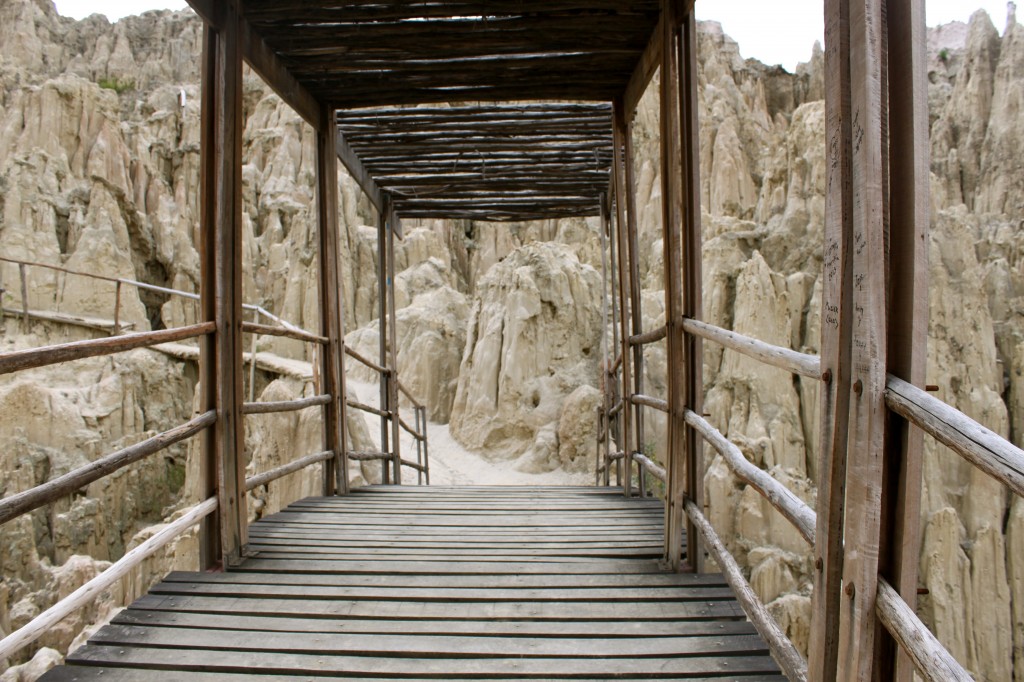
Valle de la Luna facts
1. Valle de la Luna is millions of years old
Valle de la Luna near La Paz, Bolivia, has a landscape shaped by erosion for millions of years.
It’s actually a network of canyons and tall spires, not a valley. It’s a cool place to hike and see these weird rock shapes.
2. It’s home to 32 different cacti
The area has 32 species of cactus, including the hallucinogenic San Pedro cactus which has been used in traditional medicine, healing, and religious divination for over 3,000 years.
You see it in the picture below to the right.


The rocks change color at sunset
The rock formations at Valle de la Luna shift in color when the sun sets.
This happens because the fading light hits them differently, making them look reddish and kind of dramatic.
It’s a simple but cool effect that happens every day there.
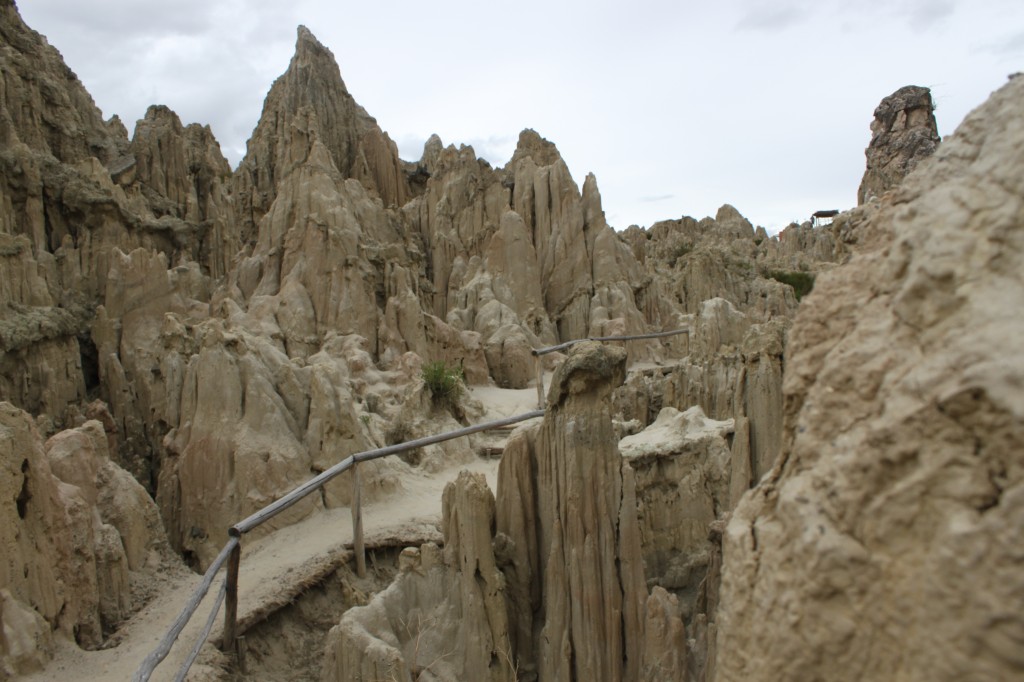
There are at least three other Valley of the Moons
The valleys got this name because their landscapes look like the moon’s surface.
You can find them in California, Argentina, and Chile. Each one is unique, but they share that moon-like vibe.
Valle de la Luna is not an actual valley but a maze of canyons and spires
Valle de la Luna isn’t really a valley. It’s more like a bunch of canyons and tall, pointy rock towers.
The name might make you think it’s one big dip in the ground, but it’s actually more like a rocky maze you can walk through.

My tips for visiting Valle de la Luna
- There are two main trails to follow. A longer 45-minute walk and a shorter 15-minute walk.
- The walk is easy and you don’t need hiking boots
- There are no guard rails so watch your step
- At the entrance, there’s a gift shop where you can buy a map. However, it’s not necessary.

FAQ – Valle de Luna Bolivia
Why is Valley of the Moon famous?
People love it because it’s so unusual; it’s a great place for photos and just to see something different from your everyday scenery.
How to visit Valle de la Luna La Paz?
To get there is pretty straightforward. You can take a bus, a taxi, or join a tour from La Paz. It’s about a 10-kilometer trip, so it won’t take you all day.
How high is the Valley of the Moon in Bolivia?
As for the altitude, well, it’s up there since it’s near La Paz. The city itself sits around 3,600 meters (about 11,800 feet), so make sure to take it easy if you’re not used to the height.
Drink plenty of water, and give yourself time to acclimatize. You don’t want altitude sickness to spoil your adventure!



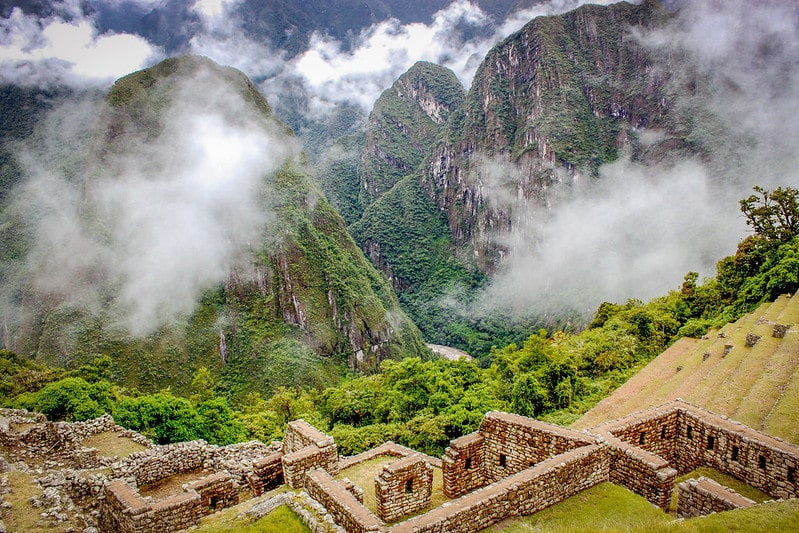

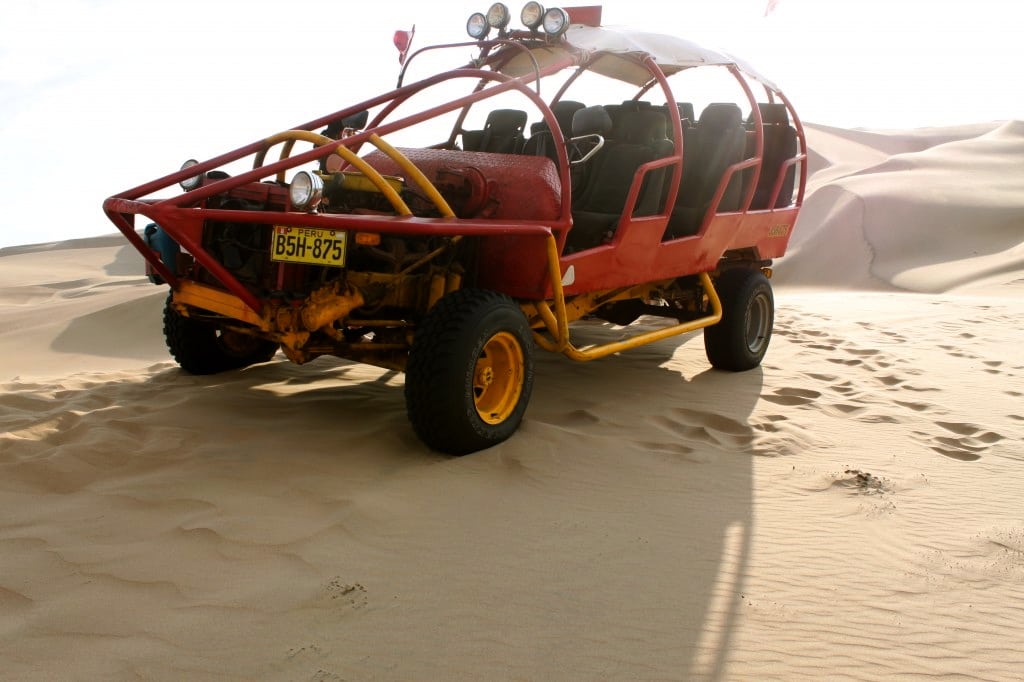

Wow I wouldn’t expect to see this place in Bolivia and even on Earth 😉 It looks even more impressive than Cappadocia! Thanks for sharing!
You’re welcome, Marine! I was quite surprised to find it there as well. In my mind, I’ve always associated Bolivia with jungle 🙂
Great article, thanks for the tips! Home to the amazing Incan and pre-Incan empires, the splendid Lake Titicaca as well as the vibrant cities of La Paz and Santa Cruz, Bolivia is indeed an amazing place to visit in South America.
However, there are tourist-targeting scammers and petty crime to be wary of.
Do be wary of the Isla del Sol scams, fake tour guides, the dropped money scam, express kidnappings, fake bus station officials, snatch theft, drug mule, and many more!
Thanks so the heads up, David! I’m sure this is useful knowledge to any reader heading to Bolivia.